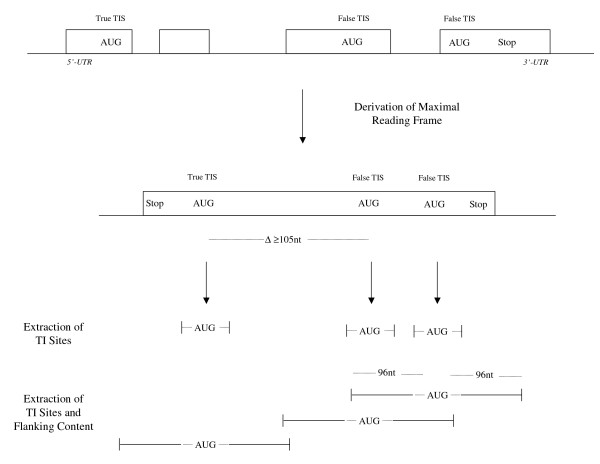Figure 1.
Extraction of training data. A genomic protein coding sequence is conceptually spliced into an open reading frame, which is extended at its 5'- and 3'-termini to render a maximal (non-stop) reading frame. For LLKR, WLLKR, and BAYES, only sequences comprising the immediate context of true and false TISs (defined as five bases upstream through three bases downstream of the ATG codon's adenine residue) are extracted for modeling the TIS signal. For flank-contrasting methods, both TIS contexts and flanking sequences (96 nt in length per flank) are extracted for training signal and content sensors, respectively. A minimal distance between true and false TISs of 105 nt is used.

